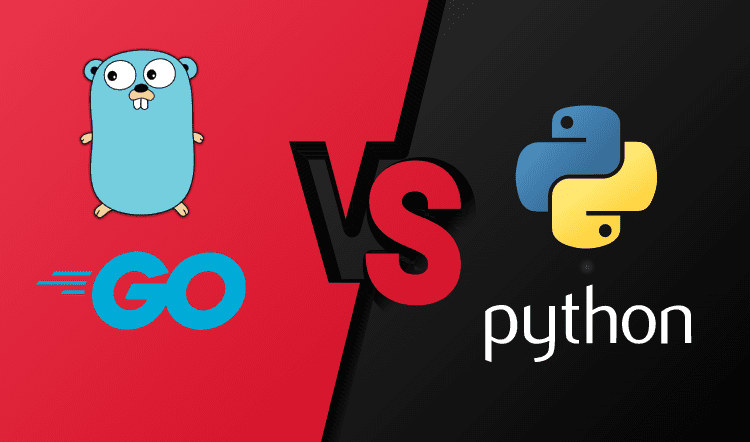Golang vs Python: A Comprehensive Guide for 2024






In 2024, the debate between Golang and Python continues to shape the landscape of programming. Python, an interpreted language, remains a powerhouse for app development, renowned for its extensive libraries and ease of use. On the other side, Golang, celebrated for its efficient dependency management and ability to launch speedy and lightweight microservices, has carved a niche among golang programmers. Both languages offer unique advantages, from Python’s versatility in data visualization to Golang’s simplicity and security features.
Sharing code and optimizing code lines are at the heart of both Python and Golang’s philosophy, yet their approaches differ significantly. Python in 2024 continues to dominate areas requiring rapid prototyping and data analysis, thanks to its interpreted nature and comprehensive libraries. Meanwhile, Golang’s design for concurrency and its growing community support make it an attractive choice for developing robust and scalable applications. The choice between Python and Golang ultimately hinges on specific project needs and developer preference.
Introduction to Golang and Python
As we dive into the programming world of 2024, Golang and Python stand out for their distinct characteristics and capabilities. Python, with its roots as an interpreted language, has become synonymous with ease of learning and versatility, making it a go-to for beginners and seasoned developers alike. Golang, or Go, distinguishes itself with its concise syntax and emphasis on concurrent programming, offering a streamlined approach for building efficient, high-performance applications. The journey through these languages reveals a landscape rich in possibilities, each with its own set of tools to tackle the challenges of modern software development.
Exploring the Python Language
Python is widely regarded as a versatile and powerful language, ideal for a range of applications from web development to data analysis. Its simplicity and readability make it a favorite among data scientists and beginners alike. The language’s extensive libraries and frameworks further empower developers to implement complex functionalities with relatively minimal code. Python’s broad applicability and ease of use continue to solidify its position as a leading choice for developers around the world.
Diving Into What Golang Is
Golang, developed by Google, offers a fresh perspective on programming with its focus on simplicity and efficiency. Designed to address some of the common challenges faced by developers, such as cumbersome code and slow execution, Golang emphasizes speed and performance. Its straightforward syntax and powerful concurrency support make it an excellent choice for high-performance applications, including web servers and cloud-based services. Golang’s growing popularity is a testament to its effectiveness in solving modern programming challenges.
The Battle of Use Cases
When comparing Python and Golang, their respective use cases highlight the strengths and versatility of each language. Python, with its easy-to-read syntax, excels in fields like AI and machine learning, where rapid prototyping and data analysis are critical. Golang, with its robust performance and concurrency model, shines in creating scalable web applications and microservices. The choice between Python and Golang often comes down to the specific needs of the project, with each language offering unique benefits that cater to different development scenarios.
Python Use Cases: Where It Shines
Python’s strengths lie in its simplicity, code readability, and the vast ecosystem of libraries and frameworks, making it an ideal candidate for AI and machine learning projects. Its flexibility and dynamic nature facilitate quick development cycles, allowing for efficient data manipulation and analysis. Python’s dominance in scientific computing, web development, and automation is a reflection of its adaptability and the rich set of tools available to developers, further cementing its place as a go-to language for a wide range of applications.
Golang Use Cases: Its Strong Suits
Golang, with its emphasis on speed and efficiency, is particularly well-suited for building scalable network servers, concurrent applications, and large distributed systems. Its powerful standard library and support for concurrent programming enable developers to build robust systems that perform well under heavy loads. Golang’s simplicity and the focus on compile-time error checking appeal to developers looking for a language that ensures code reliability and speed, making it an attractive choice for backend services and cloud-based applications.
Performance Showdown
In the arena of performance, both Python and Golang offer compelling benefits, but their approaches and outcomes differ significantly. Python’s ease of use and flexibility come with a trade-off in execution speed, as it is an interpreted language. Golang, designed as a compiled language, excels in code execution speed, making it a preferred choice for applications where performance is critical. The decision between using Python or Golang often involves weighing the need for rapid development against the requirement for application speed and efficiency.
Code Execution Speed: Golang vs Python
Comparing Golang vs Python in terms of code execution speed highlights the inherent differences between compiled and interpreted languages. Golang, a statically typed language, benefits from being compiled explicitly for the compiler, which translates code directly into machine language, resulting in faster execution times. Python, as a dynamically typed interpreter, relies on an interpreter to execute code lines at runtime, which can introduce delays. The choice between concurrent programming capabilities and the ease of a dynamically typed language depends on the project’s specific speed and performance requirements.
Scalability: Can Golang Outperform Python?
When it comes to scalability, Golang wins over Python due to its efficient concurrency model and superior performance in handling multiple tasks simultaneously. Python faces scalability limitations due to its Global Interpreter Lock (GIL), which restricts execution to one thread at a time, making it challenging to achieve true concurrency. Golang’s design includes powerful data structures and features specifically aimed at building scalable systems, making it a more suitable choice for applications expected to grow significantly in user base or functionality.
The Ease of Learning and Community Support
The journey of learning a new programming language is significantly influenced by the availability of resources and community support. Python is often hailed as the preferred language for beginners due to its readability and the vast amount of learning materials available. Golang, while newer, has seen a surge in popularity and resources geared towards machine learning development and other advanced fields. Both languages boast active communities that contribute to language development and offer support to developers, making them accessible choices for those looking to expand their programming skills.
Python: Why Its Large Community Matters
Python’s large and active community plays a crucial role in its ongoing development and widespread adoption. This vibrant community not only contributes to the extensive libraries that make Python so versatile but also provides invaluable support through forums, tutorials, and documentation. Newcomers to programming and seasoned developers alike benefit from the collective knowledge and resources available, making Python an ever-evolving and enriching language to learn and use.
Golang: Growing Community and Learning Resources
Despite being a relatively young language, Golang has quickly amassed a dedicated community of developers passionate about its potential. The growing availability of learning resources, from official documentation to community-driven projects and tutorials, makes Golang increasingly accessible to programmers of all levels. As Golang continues to gain traction in areas like machine learning development and cloud services, its community is set to play a pivotal role in shaping the language’s future and supporting its users.
Pros and Cons: A Comparative Analysis
When deciding between Python and Golang for a project, understanding the advantages and disadvantages of each is crucial. Python’s status as an interpreted and dynamically-typed language makes it highly flexible and easy to use, but these same characteristics can affect performance and type safety. On the other hand, Golang’s speed and efficiency come at the cost of a steeper learning curve and a smaller ecosystem. The choice between the two languages depends on the specific demands of the project and the team’s expertise.
Python: Advantages That Keep It on Top
Python’s appeal lies in its simplicity and the vast array of libraries and frameworks available, making it an ideal choice for a wide range of applications. Its interpreted and dynamically-typed nature allows for rapid development and iteration, features that have contributed to Python’s widespread adoption and enduring popularity.
Data Visualization and Prototyping
In the world of rapid development, Python stands out for its prowess in data visualization and prototyping. Its rich library ecosystem, including Matplotlib and Seaborn, simplifies the creation of complex visualizations. This capability not only aids in making data more understandable but also accelerates the prototyping process. Developers can quickly iterate over ideas and present data-driven insights effectively, making Python an ideal choice for projects requiring quick turnarounds and clear data presentation.
Versatility Across Various Applications
Python’s versatility is one of its most celebrated features. Languages like Python have found their way into various applications, from web development with frameworks such as Django and Flask to scientific computing and machine learning. Its simple syntax and extensive libraries support a wide range of tasks, enabling developers to tackle problems in areas such as data analytics, artificial intelligence, and even network servers. This adaptability makes Python a go-to language for both startups and tech giants.
Python: The Drawbacks You Should Consider
Despite its strengths, Python has its set of challenges. Performance concerns due to its interpreted nature and significant memory usage can be problematic for resource-intensive applications. Additionally, its dynamism, while beneficial for rapid development, can lead to runtime errors that are hard to trace. Developers must weigh these factors when choosing Python for their projects.
Performance Concerns and Memory Usage
The Python programming language, while versatile and easy to learn, faces criticism for its slower execution speed compared to compiled languages. This performance gap is noticeable in CPU-bound tasks where speed is crucial. Furthermore, Python’s dynamic nature, though a boon for developer productivity, contributes to higher memory usage. These aspects can impact the scalability and efficiency of applications, especially in contexts where resources are limited.
Limited Support for Mobile Development
When it comes to mobile app development, Python’s capabilities are found wanting. Its ecosystem, primarily designed for server and desktop environments, offers limited tools and frameworks for mobile computing. This gap hinders Python’s adoption for mobile app development, a domain where languages like Swift and Kotlin thrive. Developers aiming to build mobile applications might find Python less accommodating, pushing them towards more mobile-centric programming languages.
Golang: The Advantages Making It Popular
Golang, with its emphasis on development speed, secure coding practices, and efficient concurrency model, is gaining popularity. Its compact syntax and powerful standard library allow for the creation of high-performance applications quickly. Furthermore, Golang’s approach to error handling and its built-in support for concurrent programming patterns are attracting developers looking for a robust and productive language.
Speed and Simple Syntax
Golang distinguishes itself with its compilation speed and straightforward syntax. Designed for modern computing architectures, it executes tasks swiftly, offering a significant performance boost over languages like Python. This speed, combined with a syntax that emphasizes simplicity and readability, reduces development time and lowers the learning curve for new programmers. The result is a language that efficiently handles multi-core process complexities while remaining accessible to beginners.
Concurrency Model and Security
Golang’s concurrency model, based on goroutines and channels, enables it to handle multiple tasks simultaneously with ease. This model is integral for developing scalable applications that can manage thousands of concurrent users or operations. Additionally, Golang’s strong type system and strict compilation process contribute to heightened security, reducing the likelihood of runtime errors and vulnerabilities. These features make Golang an attractive option for creating robust, high-performance web services and applications.
Golang: The Challenges It Faces
Despite its growing popularity, Golang confronts several challenges. Its young ecosystem means fewer libraries and modules are available compared to mature languages like Python. This lack can slow down development, as developers might need to create solutions from scratch. Additionally, Golang’s simplicity, while beneficial in many respects, comes with trade-offs, including a lack of generic language features which can affect code reusability and flexibility.
Young Language with Lesser Libraries
Golang, being a relatively young language, lacks the extensive libraries and modules that developers enjoy in more established languages. This shortage can be a hurdle, especially in specialized areas requiring robust third-party support. While the standard library is powerful, the need for more community-contributed tools can lead to additional development effort. However, the Golang community is rapidly growing, and the availability of libraries is steadily increasing.
Code Reusability Issues
One of the criticisms leveled against Golang concerns its approach to code reusability. The language’s lack of generic capabilities means developers often resort to code duplication or use less type-safe options like interfaces. This situation can lead to more verbose code and potential runtime errors, detracting from Golang’s otherwise efficient and secure environment. Efforts are ongoing within the community to address these concerns and improve the language’s flexibility and reusability.
Application in Web Development and Machine Learning
Both Python and Golang find their strengths in web development, but Python takes a clear lead in machine learning. Python’s extensive libraries support complex algorithms and data processing, pivotal for machine learning and cluster computing. In contrast, Golang’s performance and concurrency make it a strong contender for building scalable web services. However, for tasks requiring advanced data analytics and artificial intelligence capabilities, Python is a language that offers more comprehensive tools and frameworks.
Python vs Go for Machine Learning
When it comes to machine learning, Python outshines Golang due to its mature ecosystem. Libraries such as TensorFlow and PyTorch provide Python users with powerful tools for developing and deploying machine learning models. Golang, while efficient and fast, lacks the specialized libraries and modules that facilitate advanced data analytics and artificial intelligence tasks. As such, Python remains the preferred choice for professionals and researchers in the machine learning field.
Golang vs Python in Web Development: A Clear Winner?
In web development, the choice between Golang and Python often depends on the project’s specific needs. Python, with frameworks like Django and Flask, offers rapid development capabilities for a wide range of web applications. Golang, on the other hand, excels in building high-performance, concurrent web services. While Python provides versatility and ease of use, Golang’s speed and efficiency in handling concurrent processes make it a formidable option for web development tasks requiring scalability and high throughput.
Future Predictions and Market Trends
The landscape of programming languages is continually evolving, with Python and Golang playing significant roles. Python’s stronghold in data analytics, machine learning, and web development positions it for sustained growth. However, Golang’s advantages in performance, concurrency, and ease of deployment are gaining recognition, suggesting a bright future in areas like cloud services and distributed systems. As technology advances, both languages are expected to adapt, potentially broadening their applications and influence in the programming world.
Golang and Python: Programming Languages in 2024
In 2024, the programming landscape continues to be dominated by both Python and Golang, each holding its ground with unique strengths. Python remains a favorite for its clear syntax and extensive library, making it a go-to for developers working on projects ranging from web development to data analysis. On the other hand, Golang, with its simplicity and efficiency, is increasingly being adopted in areas where performance and scalability are critical. Despite the rise of new languages, Python’s versatility, evidenced by its use in diverse projects from simple scripts to complex systems like Ruby on Rails, ensures its place in the developer’s toolkit.
The Shift: Can Golang Replace Python?
As the tech world evolves, the question of whether Golang can replace Python garners attention. Golang’s design, aimed at simplicity and efficiency, offers compelling advantages in concurrency and performance. However, Python’s versatility and the variety of libraries it offers make it indispensable for tasks ranging from web development to machine learning. While Golang is making inroads, especially in areas requiring high performance, Python’s broad applicability and ease of use ensure it remains irreplaceable in many sectors. The debate continues, but a complete replacement seems unlikely.
A Deep Dive Into Technical Comparison
When comparing Golang and Python, technical nuances highlight their differences and similarities. Both languages cater to a wide array of development needs yet excel in distinct areas due to their inherent characteristics.
Readability and Maintenance: Golang vs Python
Golang and Python are both widely used programming languages, each with a design philosophy that emphasizes readability. However, Python takes a step further by enforcing whitespace usage, which can result in misinterpretation if overlooked. This strictness aids in maintaining readable code, especially for beginners. Golang, while also prioritizing clarity, adopts a more traditional approach to syntax, making it familiar to those with experience in languages like C. The choice between the two often comes down to the specific needs of the project and the team’s familiarity with the languages.
Frameworks and Libraries: Enhancing Functionality
The development industry greatly benefits from the frameworks and libraries available for both Golang and Python, enhancing their functionality and speeding up the development process. Python, known for its extensive libraries, supports a wide range of applications, from web development to data science. Golang, while newer, has rapidly developed a robust set of tools for web development and cloud services, making it a strong contender in areas requiring high performance and scalability.
Real-world Applications: Companies Adopting Golang and Python
Both Golang and Python are widely adopted by companies for their versatility and performance. Python’s ease of use and extensive libraries make it a favorite for startups and tech giants alike, powering web applications, data analysis, and more. Conversely, Golang’s efficiency and concurrency model attract businesses focusing on high-performance backend services, cloud solutions, and distributed systems. The choice between Python and Golang often depends on the specific requirements of the project and the domain expertise of the development team.
Success Stories: How Companies Utilize Python
Python’s flexibility and extensive libraries have led to its adoption by a wide range of companies, from startups to tech giants. Its role in data analysis, web development, and automation makes it a versatile tool in the tech industry. Companies leverage Python for its ability to prototype quickly and handle data-intensive applications, making it a cornerstone in the fields of data science, machine learning, and web development.
Golang Adoption: Businesses Leveraging Its Potential
Golang, with its emphasis on speed and efficiency, has been embraced by companies requiring scalable and high-performance solutions. Its simple syntax and powerful concurrency model make it ideal for building fast, reliable, and efficient software. Businesses in sectors such as cloud computing, distributed systems, and microservices architecture find Golang’s features particularly beneficial, leveraging its potential to build robust systems that can handle the demands of modern computing.
Making the Choice: When to Use Golang and When to Use Python
Deciding between Golang and Python depends on several factors, including project requirements, team expertise, and future maintenance considerations. Both languages offer unique advantages that make them suitable for different types of projects.
Factors to Consider for Your Next Project
When selecting a programming language for a new project, consider the expertise of your team, the scalability requirements, and the nature of the project. Python, with its readability and extensive libraries, is often preferred by data scientists and for projects involving large amounts of data or requiring quick prototyping. Golang, on the other hand, is favored for projects that demand high performance, concurrency, and efficiency, making it a strong choice for backend development and cloud-based applications.
Addressing Common Queries: Frequently Asked Questions
Frequently asked questions about Golang and Python touch on their suitability for various projects, performance comparisons, and future relevance in the tech industry.
Is Golang Better Than Python for Backend Development?
For backend development, Golang often wins praise for its performance, particularly in concurrency and when handling large volumes of requests. Its efficient handling of data structures and straightforward syntax make it a powerful tool for developing scalable server-side applications. However, Python’s flexibility and extensive libraries continue to make it a strong choice for many backend development tasks, especially when rapid development and ease of maintenance are priorities.
Python vs Go for Machine Learning: Which Leads the Race?
In the realm of machine learning, Python leads the race due to its extensive libraries and frameworks designed specifically for data science and machine learning tasks. The availability of tools like TensorFlow and PyTorch, combined with Python’s readability, make it the preferred choice for data scientists and researchers working on machine learning projects.
The Future: Will Golang Overpower Python?
While Golang is gaining popularity, especially in areas requiring high performance and concurrency, it is unlikely to overpower Python entirely. Python’s versatility, extensive libraries, and ease of use in a wide range of applications from web development to machine learning ensure its continued relevance. The future is likely to see both languages coexisting, with each serving its niche effectively.
Conclusion: Weighing Golang vs Python for Your Development Needs
In conclusion, both Golang and Python have their merits, making them essential tools in a developer’s arsenal. Python excels as a general-purpose programming language with extensive libraries, making it ideal for a wide range of applications, including data science, web development, and automation. Golang, with its speed, simple syntax, and inbuilt concurrency, is well-suited for system programming, server-side applications, and projects requiring manual memory management and high performance. The choice between Golang or Python ultimately depends on the specific requirements of the project, the development team’s expertise, and the desired performance characteristics. By understanding the strengths and limitations of each language, developers can make an informed decision that best meets their development needs.
Embracing the Future: Making an Informed Decision Between Golang and Python
Choosing between Golang and Python depends on the project’s needs, considering their unique strengths. Python, developed by Guido van Rossum and widely appreciated since its introduction, offers an easy-to-understand syntax and powerful standard library, making it ideal for server-side programming, video editing, and tasks requiring a dynamic nature. Its broad acceptance across various hardware platforms also supports mobile application development, although it might not be the first choice for this purpose. On the other hand, Golang, developed in 2007, shines with its minimal syntax and efficient handling of multiple tasks through its advanced concurrency model. While it may lack the extensive library support Python boasts, its performance and simplicity in writing code make it a strong contender for projects prioritizing speed and security.